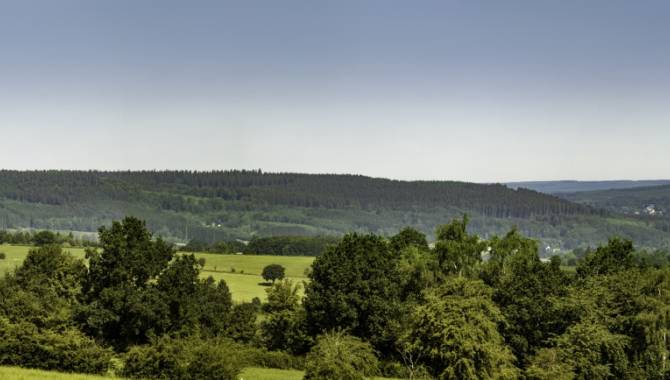




Photo: medell depertzberg panorama wolfsbusch 01 c christian charlier ostbelgien.eu , CC BY ,East Belgium Tourist Agency NPO

Photo: montenau keltische muhlsteine 05 c christian charlier ostbelgien.eu , CC BY ,East Belgium Tourist Agency NPO

Photo: montenau keltische muhlsteine 04 c christian charlier ostbelgien.eu , CC BY ,East Belgium Tourist Agency NPO

Photo: montenau keltische muhlsteine 03 c christian charlier ostbelgien.eu , CC BY ,East Belgium Tourist Agency NPO

Photo: wolfsbusch goldwaschen c ostbelgien.eu , CC BY ,East Belgium Tourist Agency NPO

Photo: montenau flusslauf amel 10 c ostbelgien.eu dominik ketz , CC BY ,East Belgium Tourist Agency NPO

Photo: montenau wandern genusstour 01 c ostbelgien.eu , CC BY ,East Belgium Tourist Agency NPO







Description
Linguistic borders
Germanic tribes, which had forced their way into the Roman Empire across the Rhine in the period between 400 and 600 A.D., settled as far as this ridge during the migration of the peoples. They left their mark on the culture in those places where German is spoken today. The area behind the Wolfsbusch remained under Gallo-Roman influence, so that Walloon and French established themselves there.
Millstones
For a long time, the Wolfsbusch was a purely deciduous wood. Especially beeches and oaks were exploited here. However, there was also a different kind of raw material in the form of greywacke. Even today, you can recognise the open-air workshops of the stonemasons who made millstones here.
Gold rush
West of Montenau, along the Amel and its tributaries, there are veins of quartz with small quantities of gold. Both the Celts and the Romans dug here. Around the end of the 19th century, there was a brief gold rush, but it soon came to and end on account of the poor yield.
Carte
Wolfsbusch
4770 Amel